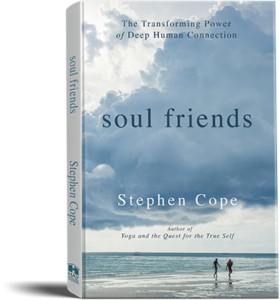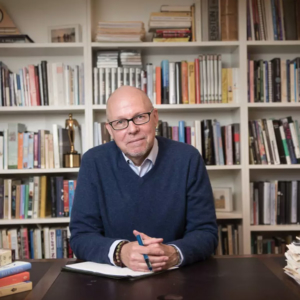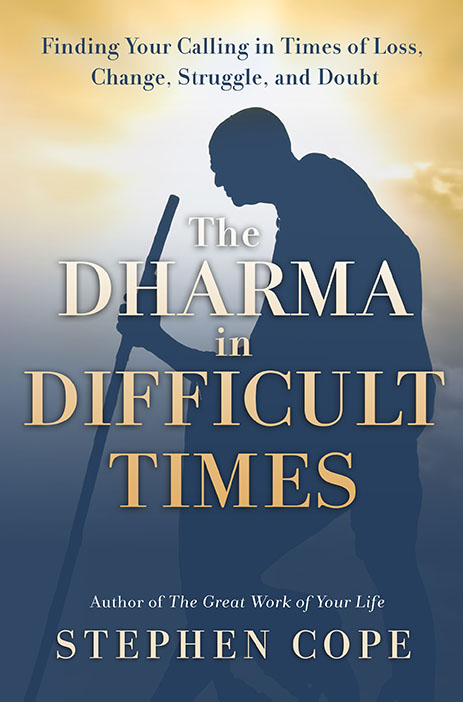By Stephen Cope ~
In the aftermath of World War II, a brilliant student of Sigmund Freud made significant advances in the understanding of human development—advances which at the time appeared so radical that they would finally cause him to split with Freud, the master.
Dr. Heinz Kohut (1913 – 1981) was an Austrian-born psychoanalyst who rose to prominence as the head of the prestigious Chicago Institute of Psychoanalysis. Kohut came to believe that relationships—friendships, romantic relationships, human attachments of all kinds—were at the very heart of our capacity to fully develop our latent human capacities.
Does this seem like a radical notion to you?
Kohut observed that in order to develop our human potentials, we must intentionally create for ourselves “a surround of relationships” that “evoke, affirm and sustain” the core of the self. Indeed, he came to see that human beings are radically interdependent creatures and that almost all significant human development and transformation happens in the context of lively human connections. The self, then, fragile as it is, is co-created through connection with important others.
 Moreover, Kohut came to see that these vital human connections—evoking, affirming, and sustaining!—must remain active throughout the course of life. We are not formed exclusively by our earliest connections but remain remarkably plastic to relationships throughout the lifespan. These active human connections can transform us at any age!
Moreover, Kohut came to see that these vital human connections—evoking, affirming, and sustaining!—must remain active throughout the course of life. We are not formed exclusively by our earliest connections but remain remarkably plastic to relationships throughout the lifespan. These active human connections can transform us at any age!
Kohut, of course, looked very closely at the particular kinds of connections we most need—at the precise “mechanisms of interpersonal transformation” that are required for any of us to thrive.
As I explain in my book Soul Friends, and building upon Kohut’ brilliant insights, there are six types of interactive “mechanisms” that we all need in order to grow into robust and unified beings—six kinds of relationships that we all need. I have called these particular relationships “Soul Friends.” See if you recognize these six kinds of attachments from your own life.
1. Containment: Throughout life, our “containers” evoke in us a feeling of being safely and securely held and soothed, and provide for us—with their very bodies and minds—a safe holding environment into which we can both relax and expand. These can, initially, be parents or parent-figures, and later in life can be mentors and friends and relationships of all sorts.
2. Twinship: This is a term coined by Dr. Kohut. Our twinship attachments inspire in us a deep feeling of belonging, a sense of “alikeness” with other human beings. A sense that in all the wide world there is at least one person who truly understands us. Twinships often come in the form of “best friends,” with whom we experience an exhilarating sense of oneness and attunement that is quintessentially reciprocal. Romantic relationships often partake of this sense of “oneness” that is profoundly reassuring.
3. Adversity: Most of us have had the experience of an important friend who challenges us, who opposes us at times, who confronts us, and even frustrates us—but in ways that turn out to be salutary for our souls and personalities. This is the one friend whom you know will tell you the precise truth. We all know that this friend is solid gold, even though the relationship may at times be difficult. This is the friend, or boss, or mentor, who—through active opposition—forces us to draw ourselves together into our most cohesive and powerful self. Especially at the end of life, as we look back, we will be profoundly grateful to this friend.
4. Mirroring: Do you have a friend in whose presence you have the profound experience of being seen? A friend who sees something special in you, who seems to recognize who you are—in the best sense—and who (most importantly) mirrors this recognition back to you? This friend is The Mirror. If we think about this closely, we will see that there are parts of ourselves that we can never see, can never perceive, without the help of these “mirrors.” The experience of being recognized is one of the most profound in life.
5. Mystic Resonance: From time to time throughout life, we will encounter—either in person, or through reading, study, or observation—another human being who seems to be fully expressing in his own life some possibility that you feel you have inside yourself. Perhaps an author, a scientist, an artist, a musician. Ludwig van Beethoven looked the world over to find another musical soul with whom he could resonate. Another soul who might understand his fledgling genius. He studied with the greatest musicians of his day, but he did not find this Soul Friend. Finally. Finally, when he discovered the music of the long-deceased Johann Sebastian Bach, he was able to say, “There!! There!! That is what I can be. There is a man who would know my soul. And whose own soul I know intimately.” This is the Mystic Friend. We feel a mysterious, mystical kinship with this human being that changes our lives!
6. Conscious Partnership: If we are lucky, and skilled, many of us will find through the course of life one or more human beings who are interested in becoming conscious partners and allies with us in our attempt to become all that we can be. These may be romantic partnerships, or marriages, or deep friendships with other human beings who are willing to commit to share our struggle, to understand, make meaning of, and express, our true self. These friendships may last throughout a lifetime, or only for a matter of months or years. They result in a proactive, intentional “we” that is stronger than “me,” and they produce remarkable developmental leaps!
There is tremendous good news here!
Once we understand the true power of these relationships, and precisely how they work, we are in a position to consciously use them for our own growth. We can then begin to systematically create for ourselves that very surround of highly effective relationships that will continue to evoke, affirm and sustain our most mature selves—just as Kohut himself did. To learn more, see my book – Soul Friends.





